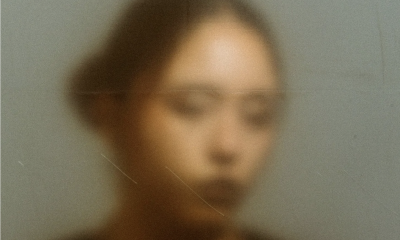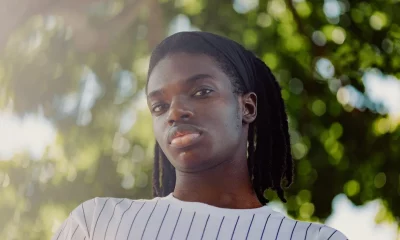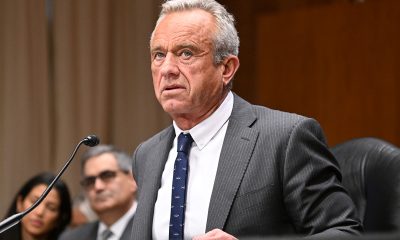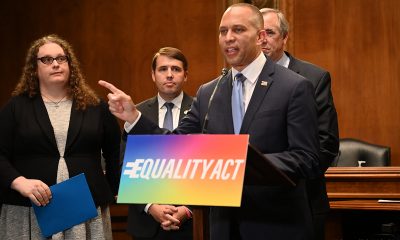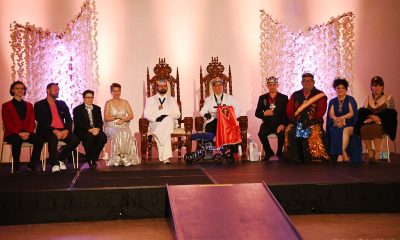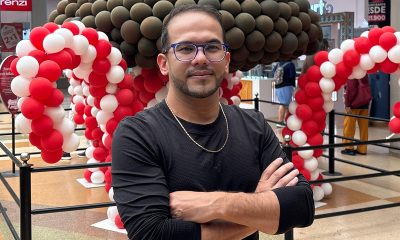Celebrity News
Why Wayne Brady coming out as pansexual is a big deal
‘Let’s Make A Deal’ host spoke exclusively with People magazine
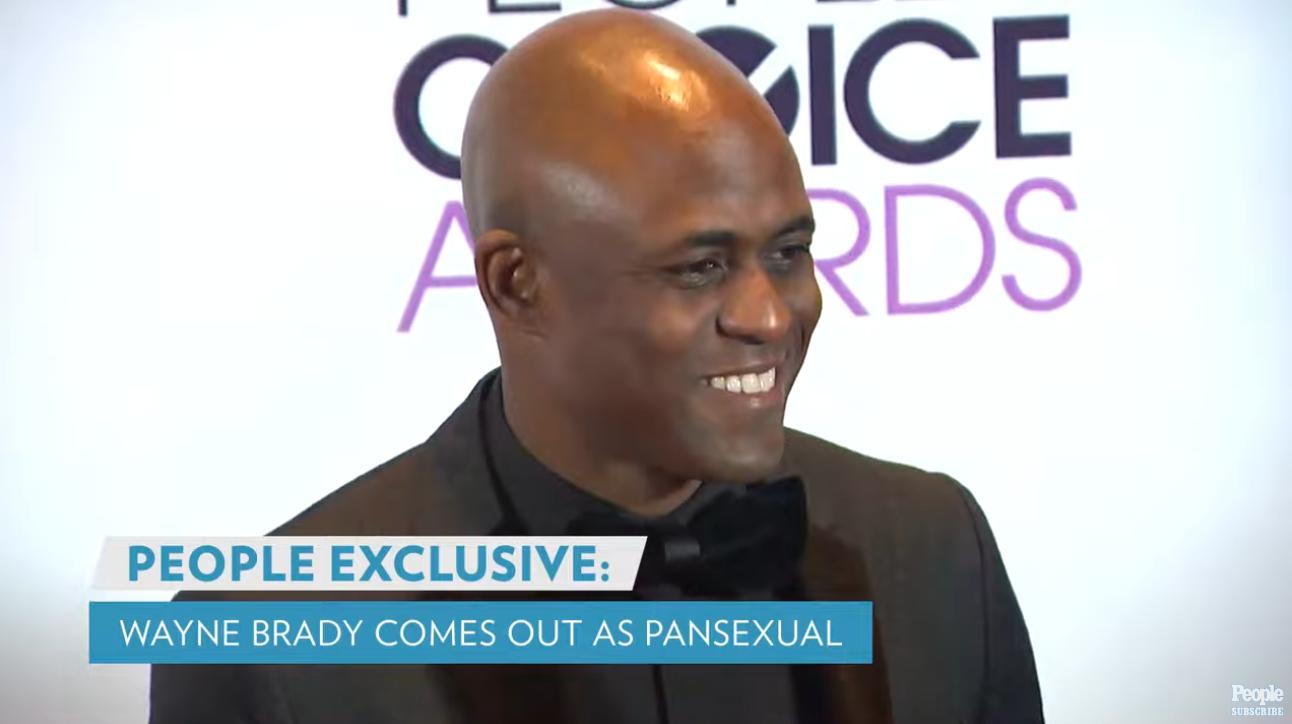
Someday it won’t matter when a celebrity comes out as LGBTQ, but until that day comes, when every orientation and identity is embraced, accepted and respected equally, this is how it goes: Wayne Brady told TikTok and Instagram followers that he is pansexual, and People magazine told the world.
“I am pansexual,” he told the magazine’s Jason Sheeler in an exclusive interview. “Bisexual — with an open mind!” Brady added.
Sheeler explained to People readers that this means he is “attracted to persons regardless of their sex or gender.” In its wide-ranging media guide, GLAAD defines “pansexual” as “an adjective used to describe a person who has the capacity to form enduring physical, romantic, and/ or emotional attractions to any person, regardless of gender identity. This is one of several terms under the bi+ umbrella.”
As the most mainstream television personality to come out so far, Brady is a standout among other pan celebrities, including Miley Cyrus, Demi Lovato, Janelle Monáe, Cara Delevingne, Asia Kate Dillion, Jazz Jennings and JoJo Siwa.
View this post on Instagram
@tubbynugget Surely I’ll be functional after another nap…SURELY 🥹 Be right back friends!! 🥰
Brady, 51, shot to stardom in 1998 on “Whose Line Is It Anyway?” the TV show that showcased his enormous talent at improvisation, a program that’s still on the air with Brady now serving as an executive producer. The Georgia native is also an actor with dozens of credits to his name, in movies, on Broadway and on television, and served as the host of the rebooted “Let’s Make A Deal.”
The first person Brady came out to was his ex-wife, Mandie Taketa. “I just said, ‘Great.’ As I knew coming out would help him be happier,” she said.
Taketa is co-parenting a toddler with both Brady and her partner, Jason Fordham. Brady and Taketa, 47, also have a daughter, Maile, 20. The blended family of four are currently filming a reality show for Hulu, according to the magazine.
“I love all people equally, and now that includes myself,” said Brady. That’s a turnaround from a bitter time more than 20 years ago, when the actor had a falling out with a writer on “The Chappelle Show.” It was over a joke that Brady insisted as recently as 2021 offended him mostly because it wasn’t funny: “White people love Wayne Brady because he makes Bryant Gumbel look like Malcolm X,” the late Paul Mooney said on Dave Chappelle’s sketch comedy show.
Brady was later invited to appear on the show in a hilarious and memorable sketch that portrayed him in an entirely different light.
For People magazine, Brady wrote his own coming out story, which appears below in full:
“I’m pansexual.
In doing my research, both with myself and just with the world, I couldn’t say if I was bisexual, because I had to really see what that was, especially because I really have not gotten a chance to act on anything. So, I came to pansexual because — and I know that I’m completely messing up the dictionary meaning — but to me, pan means being able to be attracted to anyone who identifies as gay, straight, bi, transsexual or nonbinary. Being able to be attracted across the board. And, I think, at least for me for right now, that is the proper place. I took pan to mean that not only can I be attracted to any of these people or types physically, but I could be attracted to the person that is there.
People think they really know me. That has its advantages and disadvantages.
Like with any blessing, I’m like, “How cool.” It’s cool that people like me, especially doing a show, like Let’s Make a Deal, or when various companies or networks think, “I want Wayne Brady to host this,” what a blessing! What a blessing to be in people’s homes every day and connect with them. I love that piece of it. But there are days that I’m not a fan of it. Because, really, I’m an actor. I don’t want to lead personality-first.
There’s a reason why I live in a canyon in Malibu and not in the middle of Hollywood. I’m an introvert. Shy. I always have been. I had a very thick stutter at one point during my childhood, growing up in Orlando, brought on by anxiety and bullying and stress. I couldn’t communicate the way that I wanted to until I started acting, singing and performing.
As characters. I was Tigger and Goofy and a Toy Soldier in the Disney Christmas parade. I loved that because you see the work. You don’t necessarily see me. I love bringing joy, which is why I love being a character: If I can do that as a character, so maybe the character is Wayne Brady. There’s a lot of therapy that I’m doing right now. I wish I didn’t care what people think of me, but the fact of the matter is, I do care. It’s a weird dichotomy, going from a screaming audience to sitting in a house, just chilling all by yourself.
Robin Williams’ death in 2014 really impacted me — and set me on my path to self-discovery.
After Robin’s death, I got involved in certain groups, like Glenn Close’s group, Bring Change to Mind, being very vocal about mental health. And not just the buzzword of mental health, but really what do I have to do to function in this big world and still be okay with yourself and more importantly, to love yourself so that you don’t hurt yourself? Not even just physically hurting yourself, but not taking care of yourself because you are depressed and frightened and weighed down.
Once I opened that door to myself though, I had to start learning about myself, and I had to start owning up to things that maybe I’d either repressed, suppressed, or just didn’t wanna deal with. I’ve done a lot of work on a lot of other things until now, one of the last things on that checklist was, what’s one of the last things that you need to be really happy and to be truly, authentically yourself? I gave joy at work. But the pity is then I come home, and I don’t have that joy. I have joy because I love my daughter and I love my family. I love being a dad more than chocolate ice cream. But that can’t be my only joy. I have to love myself. And that’s when I realized that I had a problem because if I can spend everything on stage and on camera but then I come home and there is a love deficit, what is going on? That was my rock bottom.
I was never suicidal, but I have empathy for those who face those thoughts.
I understand it now. I got to a point where I thought, ‘I’m not here, then whatever this pain is, whatever this loneliness is, this soul-crushing loneliness, I could stop it. I could be absolutely pain-free of whatever this is inside of me.’ And when I felt that, I went, ‘Oh, s–t. Okay. let’s get to the bottom of it. Let’s do it now.’
I did all the therapy I could do. I was treated for love addiction. It’s a part of my journey. I had to start examining why I was looking for myself and happiness in a slew of people. If I marry this person, then everything will be fine. If I date this person, everything will be fine. I’ll be good. I’ll be fixed. That is obviously a problem. And so, in doing that work, I now know absolutely that love addiction is borne of trauma. I can’t feel any shame around that, just like I wouldn’t shame somebody if they said they were addicted to meth or cocaine. That’s a sickness.
What am I looking for in these people that I can’t find in myself? And then leaving a wake of people and never being satisfied and then going back to being lonely. Fast forward to recently asking myself the question: ‘Wayne, um, are you gay?’ And the answer was no because despite having been in all of these unsuccessful relationships and now dealing with what I know can be diagnosed as love addiction, I started to go, ‘Okay, I’m feeling something, but I just don’t know how to get there.’ And then I felt like a fraud.
I’ve been attracted to men at times in my life. But I have never dated a man.
Let’s be really honest: I’ve also been attracted to certain men in my life, but I’ve always pushed that aside because of how I was raised, and because I live in today’s world, and it’s scary as s–t. What’s the fastest way to hurt another man? I’m gonna call you out of your name. I’m gonna call you gay. I’m gonna emasculate you. I’m gonna use the F-word. I learned that very early from the people around me, they’re like, ‘Oh, so those are bad things? Yeah. You, you don’t wanna be that.’
So, what does it mean if I feel something? I don’t think I’m gay, but what if I feel something for another [man] … That’s still gay. I was already bullied about a bunch of other s–t. I didn’t wanna add a top hat on top of that suit.
I’ve dealt with the shame.
A shame cake, just eating it every single day — and then worried about … people finding out. I’ve always had a wonderful community of friends who are in the LGBTQ+ community, people that I’ve grown up with in shows, gays and lesbians, and, later in life, my trans relatives and my niece. I’ve always had that community, but I’ve always felt like a sham because I wasn’t being forthcoming with myself. I could speak out about Black issues because I can’t hide that. And you can play at being an ally, but until the day that you can truly say, ‘This is who I am, and I wanna stand next to you,’ that’s not … I always wanted that day to come.
I’ve told myself in the past, also, nobody needs to know my personal business. The world can absolutely go without knowing that Wayne identifies as pan. But that gave me license to still live in the shadows and to be secretive. What does that feel like to actually not be shameful, to not feel like, ‘Oh, I can’t be part of this conversation because I’m lying?’ I had to break that behavior.
I’m now trying to be the most Wayne Brady I can be.
I don’t know about most, actually. I’m still coming together. But If I’m healthy, then I can go onstage at Let’s Make A Deal and be the best Wayne Brady that everybody wants and expects. I can be the best dad that Maile needs. I can be the best friend to Mandie, the best son to my mother, and one day, the best partner to someone, because I’m doing this for me. Not dating yet though! [Laughs] I am single, but it’s not about being with someone right now. I’ve got some work to do still. Then, Wayne as a single, open-minded pansexual can make a decision and be free and open to other people.”
Follow Wayne Brady on Instagram at @mrbradybaby and on TikTok at @waynebrady

Rob Reiner, most known for directing untouchable classics like “The Princess Bride,” “Misery,” “When Harry Met Sally…,” and “Stand by Me,” died Dec. 14 alongside his wife, Michele Singer Reiner, in their Los Angeles residence. While investigations are actively underway, sources have told PEOPLE Magazine that the pair’s son, Nick Reiner, killed his parents and has been taken into custody.
Reiner was a master of every genre, from the romantic comedy to the psychological thriller to the coming-of-age buddy movie. But in addition to his renowned work that made him a household name, Reiner is also remembered as a true advocate for the LGBTQ community. In 2009, Reiner and his wife co-founded the American Foundation for Equal Rights, helping fight against California’s Prop 8 same-sex marriage ban. They were honored at the 2015 Human Rights Campaign Las Vegas Gala.
In a statement, HRC President Kelley Robinson said: “The entire HRC family is devastated by the loss of Rob and Michele Reiner. Rob is nothing short of a legend — his television shows and films are a part of our American history and will continue to bring joy to millions of people across the world. Yet for all his accomplishments in Hollywood, Rob and Michele will most be remembered for their gigantic hearts, and their fierce support for the causes they believed in — including LGBTQ+ equality. So many in our movement remember how Rob and Michele organized their peers, brought strategists and lawyers together, and helped power landmark Supreme Court decisions that made marriage equality the law of the land — and they remained committed to the cause until their final days. The world is a darker place this morning without Rob and Michele — may they rest in power.”
Reiner’s frequent collaborators have also spoken out as the industry is in mourning, including figures like Ron Howard and John Cusack.
A joint statement from Jamie Lee Curtis and Christopher Guest (who starred in Reiner’s “This is Spinal Tap”) reads: “Christopher and I are numb and sad and shocked about the violent, tragic deaths of our dear friends Rob and Michele Singer Reiner and our ONLY focus and care right now is for their children and immediate families and we will offer all support possible to help them. There will be plenty of time later to discuss the creative lives we shared and the great political and social impact they both had on the entertainment industry, early childhood development, the fight for gay marriage, and their global care for a world in crisis. We have lost great friends. Please give us time to grieve.”
While attending the 2019 HRC Los Angeles Dinner, Reiner spoke out about the need for equality: “We have to move past singling out transgender, LGBTQ, black, white, Jewish, Muslim, Latino. We have to get way past that and start accepting the idea that we’re all human beings. We’re all human beings, we all share the same planet, and we should all have the same rights, period. It’s no more complicated than that.”
Brazil
Black transgender singer from Brazil wins three Latin Grammy Awards
Liniker performed at Las Vegas ceremony
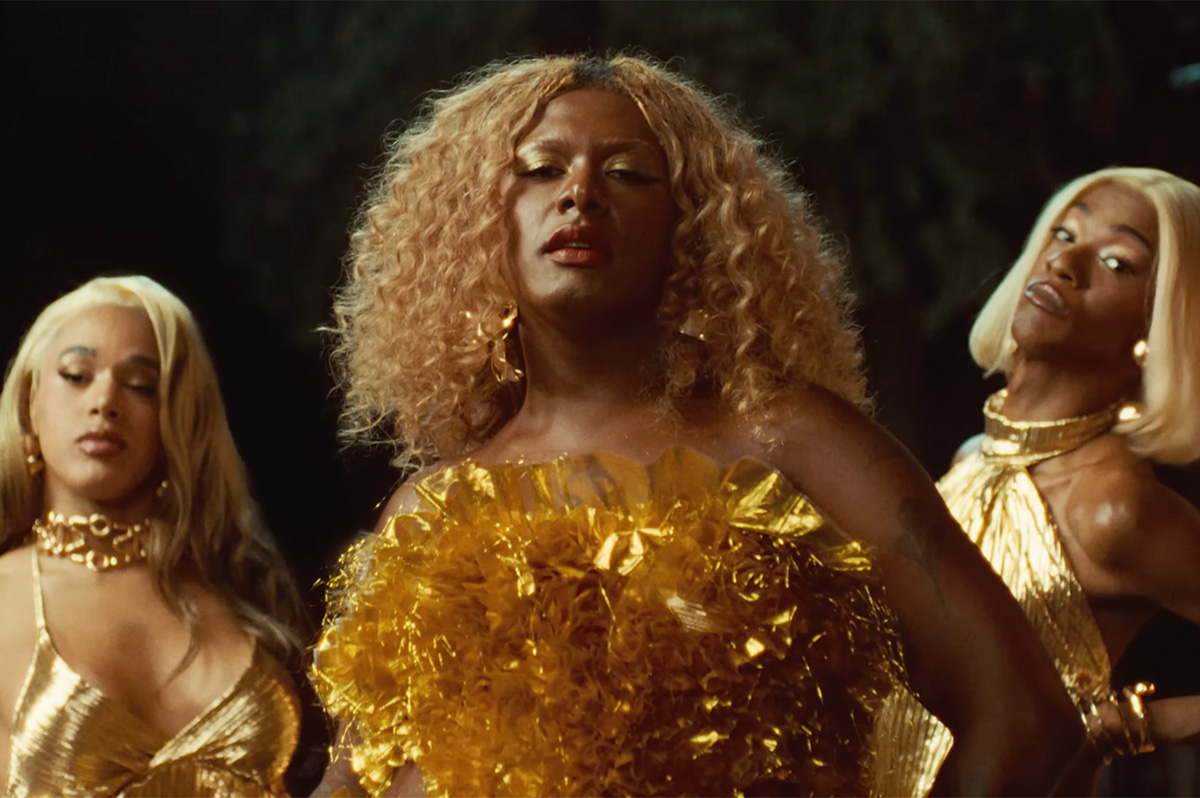
A Black transgender singer and songwriter from Brazil on Nov. 13 won three Latin Grammy Awards.
Liniker, who is from Araraquara, a city in São Paulo State, won for Best Portuguese Language Song for her song “Veludo Marrom,” Best Portuguese-Language Urban Performance for her song “Caju” from her sophomore album of the same title, and Best Portuguese Language Contemporary Pop Album for “Caju.”
She accepted the awards during the Latin Grammy Awards ceremony that took place in Las Vegas. Liniker also performed.
“I’ve been writing since I was 16. And writing, and poetry, have been my greatest form of existence. It’s where I find myself; where I celebrate so many things I experience,” said Liniker as she accepted her first Latin Grammy on Nov. 13. “And being a composer … Being a trans composer in Brazil — a country that kills us — is extremely difficult.”
Liniker in 2022 became the first openly trans woman to win a Latin Grammy.
Celebrity News
Jonathan Bailey is People’s first openly gay ‘Sexiest Man Alive’
‘It’s a huge honor. And it’s completely absurd.’
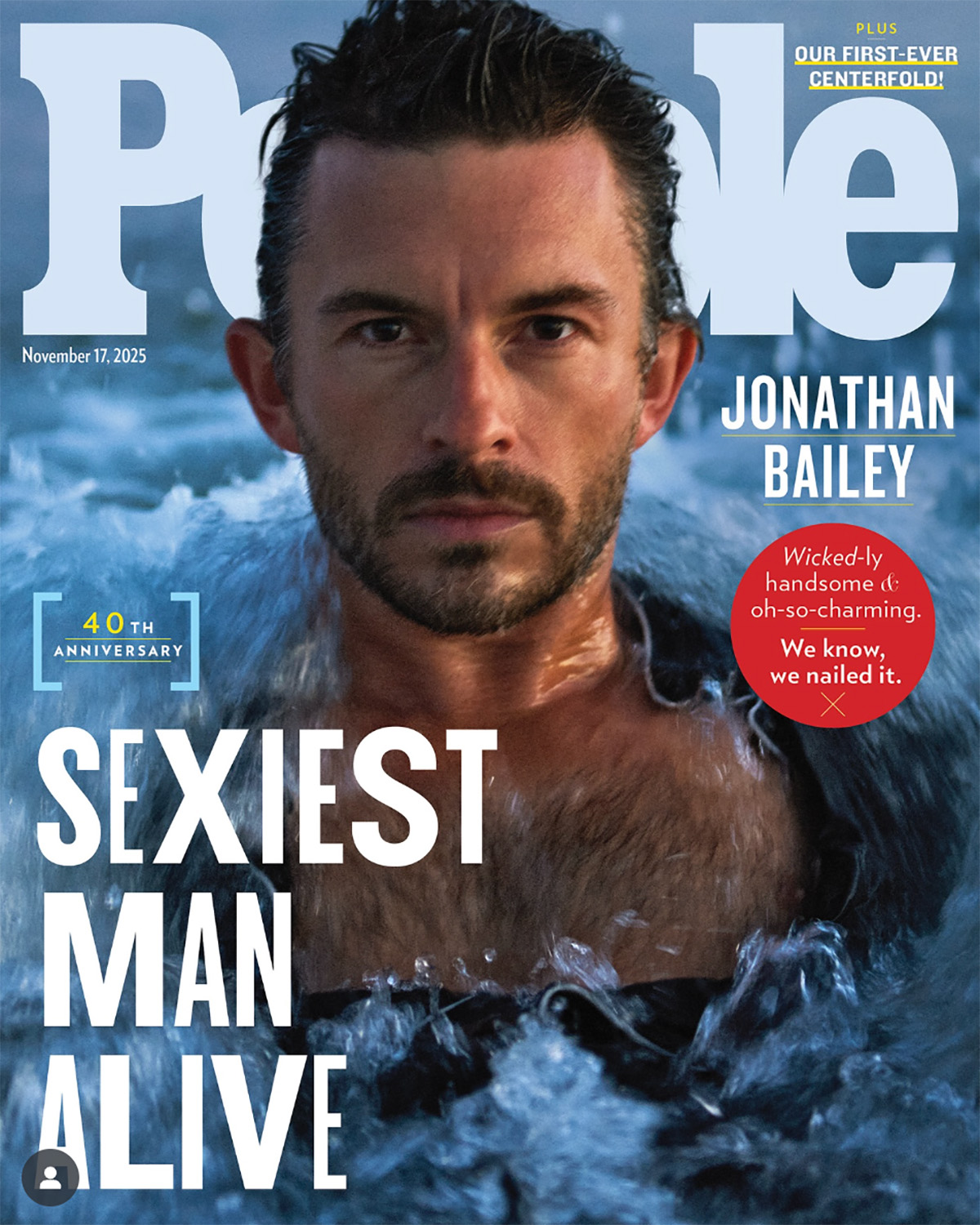
Actor Jonathan Bailey made history Monday after he was named People magazine’s first openly gay “Sexiest Man Alive.”
Bailey is known for his starring role in “Wicked,” as well as well-received turns in “Bridgerton” and “Fellow Travelers,” for which he was nominated for an Emmy. He returns to the big screen on Nov. 21 in the “Wicked: For Good” sequel.
Bailey announced the news on the Nov. 3 “Tonight Show” with Jimmy Fallon.
“It’s the honor of a lifetime,” Bailey, 37, said. “I want to say, Jimmy, thank you so much for turning it down so that I could be here.”
Bailey told People, “It’s a huge honor. Obviously I’m incredibly flattered. And it’s completely absurd. It’s been a secret, so I’m quite excited for some friends and family to find out.”
People launched its popular “Sexiest Man Alive” issue in 1985 with inaugural winner Mel Gibson. Last year’s winner was actor John Krasinski.
Bailey came out publicly in 2018 and founded a nonprofit, Shameless Fund, which raises money for LGBTQ organizations and issues.
-

 National5 days ago
National5 days agoWhat to watch for in 2026: midterms, Supreme Court, and more
-

 Opinions5 days ago
Opinions5 days agoA reminder that Jan. 6 was ‘textbook terrorism’
-

 District of Columbia5 days ago
District of Columbia5 days agoImperial Court of Washington drag group has ‘dissolved’
-

 Colombia4 days ago
Colombia4 days agoGay Venezuelan man who fled to Colombia uncertain about homeland’s future

